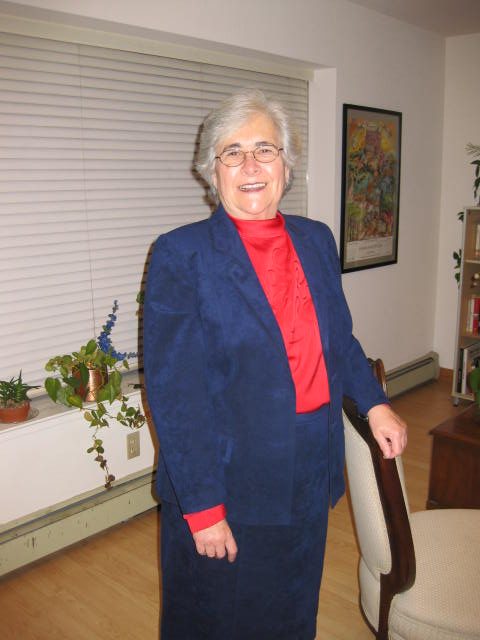Siyum Masechet Avodah Zarah
Siyum Masechet Avodah Zarah is dedicated with love and pride to Terri Krivosha from her husband, Rabbi Hayim Herring, her children, Tamar, Avi and Shaina, and her grandchildren, Noam, Liba, and Orly, for completing her first Daf Yomi cycle. You embody the words of Micah 6:8, and “do justice, love goodness, and walk modestly with HaShem.”
Want to dedicate learning? Get started here:


Summary
Today’s daily daf tools:
Siyum Masechet Avodah Zarah
Siyum Masechet Avodah Zarah is dedicated with love and pride to Terri Krivosha from her husband, Rabbi Hayim Herring, her children, Tamar, Avi and Shaina, and her grandchildren, Noam, Liba, and Orly, for completing her first Daf Yomi cycle. You embody the words of Micah 6:8, and “do justice, love goodness, and walk modestly with HaShem.”
Today’s daily daf tools:
New to Talmud?
Check out our resources designed to help you navigate a page of Talmud – and study at the pace, level and style that fits you.
The Hadran Women’s Tapestry
Meet the diverse women learning Gemara at Hadran and hear their stories.
Yevamot 13
וְרַב זְבִיד אָמַר: אֵין בָּנִים בְּלֹא סִימָנִים. וְנִבְדּוֹק! חָיְישִׁינַן שֶׁמָּא נָשְׁרוּ. הָנִיחָא לְמַאן דְּאָמַר חוֹשְׁשִׁין.
§ And Rav Zevid said: There are no children without signs of puberty. In other words, if a girl gives birth, she definitely possesses the signs of puberty. The Gemara asks: But if so, let us examine to see whether these physical signs are present, so that there is no need to depend on a presumption. The Gemara answers: We are concerned lest the hairs that constitute the sign have fallen off. The Gemara comments: This works out well according to the one who said that in general we are concerned lest signs fall off, i.e., that there are cases in which she is in fact mature but the hairs have come off.
אֶלָּא לְמַאן דְּאָמַר אֵין חוֹשְׁשִׁין — מַאי אִיכָּא לְמֵימַר? אֲפִילּוּ לְמַאן דְּאָמַר אֵין חוֹשְׁשִׁין — מִשּׁוּם צַעַר לֵידָה חָיְישִׁינַן.
However, according to the one who said that if there are in fact hairs they will certainly be found, and we are not concerned that they may have fallen out, what is there to say? The Gemara answers: Even according to the one who said that in ordinary circumstances we are not concerned that the hairs may have fallen out, in this case, due to the pain of childbirth we are concerned that they might have fallen out, and therefore it is impossible to examine the matter conclusively.
כֵּיצַד פּוֹטְרוֹת צָרוֹתֵיהֶן וְכוּ׳. מְנָהָנֵי מִילֵּי? אָמַר רַב יְהוּדָה, דְּאָמַר קְרָא: ״לִצְרוֹר״ — הַתּוֹרָה רִיבְּתָה צָרוֹת הַרְבֵּה.
§ The Gemara returns to the mishna: How do they exempt their rival wives and the rival wives of their rival wives? The Gemara asks: From where are these matters, that not only is a rival wife exempt but the rival wife of a rival wife is exempt as well, derived? Rav Yehuda said that this is as the verse states: “And you shall not take a woman to her sister, to be a rival [litzror] to her” (Leviticus 18:18). The term litzror is written, with the letter reish appearing twice, rather than latzor, with a single reish, which means that the Torah amplified and included many rival wives. In other words, this verse includes not only the rival wife of a forbidden relative, but also the rival wife of a rival wife.
רַב אָשֵׁי אָמַר, סְבָרָא הִיא: צָרָה מַאי טַעְמָא אֲסִירָא — דְּבִמְקוֹם עֶרְוָה קָיְימָא, צָרַת צָרָה נָמֵי — בִּמְקוֹם עֶרְוָה קַיְימָא.
Rav Ashi said: It is a logical inference, which does not require a source from the Torah. What is the reason that a rival wife of a forbidden relative is prohibited? The reason is that she stands in place of a forbidden relative. Since the forbidden relative caused her exemption from levirate marriage, she too is considered a forbidden relative who remains categorized as a brother’s wife. Therefore, the rival wife of a rival wife also stands in place of a forbidden relative, as she is like the rival wife of a forbidden relative and is therefore forbidden herself.
כֵּיצַד אִם מֵתוּ הֵן כּוּ׳. וַאֲפִילּוּ כָּנַס וּלְבַסּוֹף גֵּירַשׁ.
§ The mishna taught: How so? If the forbidden relative died, performed refusal, or was divorced, from that moment onward their rival wives are no longer considered the rival wives of a forbidden relative and are permitted. The Gemara remarks: This legal ruling with regard to a divorce is presented as a general principle and is therefore correct even if at the time that the deceased brother married the rival wife he was married to the forbidden relative, and ultimately divorced the relative, which means that for a period of time the women were rival wives. Even under these circumstances the prohibition of a rival wife of a forbidden relative does not apply, and she is permitted to enter into levirate marriage.
וּרְמִינְהוּ: שְׁלֹשָׁה אַחִים, שְׁנַיִם מֵהֶן נְשׂוּאִים שְׁתֵּי אֲחָיוֹת, וְאֶחָד נָשׂוּי נׇכְרִית, גֵּירַשׁ אֶחָד מִבַּעֲלֵי אֲחָיוֹת אִשְׁתּוֹ, וּמֵת הַנָּשׂוּי נׇכְרִית וּכְנָסָהּ הַמְגָרֵשׁ, וָמֵת, זוֹ הִיא שֶׁאָמְרוּ: שֶׁאִם מֵתוּ אוֹ נִתְגָּרְשׁוּ — צָרוֹתֵיהֶן מוּתָּרוֹת.
And the Gemara raises a contradiction from a different mishna (30a), which discusses three brothers, two of whom are married to two sisters and one is married to an unrelated woman. One of the husbands of the sisters subsequently divorced his wife, and the one who was married to the unrelated woman died, and the one who divorced his wife married the yevama by levirate marriage and afterward died as well, which means that this yevama once again came for levirate marriage before the remaining brother, who was married to one of the sisters. It is with regard to this case that they said that if they died or were divorced their rival wives are permitted. This concludes the mishna.
טַעְמָא דְּגֵירַשׁ וְאַחַר כָּךְ כָּנַס, אֲבָל כָּנַס וְאַחַר כָּךְ גֵּירַשׁ — לָא!
The Gemara infers from this mishna: The reason she is permitted is that the yavam first divorced the sister and only afterward married the unrelated woman. In this case, the unrelated woman was never actually the rival wife of a sister, despite the fact that they were, at different times, married to the same man. However, if the yavam first married the unrelated woman and afterward divorced the sister, she would not be permitted to enter into levirate marriage because for a period of time she had been the rival wife of a forbidden relative.
אָמַר רַבִּי יִרְמְיָה: תַּבְרָא, מִי שֶׁשָּׁנָה זוֹ לֹא שָׁנָה זוֹ. הַאי תַּנָּא סָבַר — מִיתָה מַפֶּלֶת,
These two mishnayot apparently contradict each other. Rabbi Yirmeya said: This mishna is disjointed, i.e., the mishnayot are truly incompatible, and the tanna who taught this halakha did not teach that halakha. The reason for the difference in opinions is that this tanna, of the mishna here, maintains that death causes her to come before him for levirate marriage. In other words, the decisive moment that determines the obligation in or exemption from levirate marriage is the moment of the childless brother’s death. Since in the case of the mishna here she was not the rival wife of a forbidden relative at the time of his death, the prohibition does not apply to her.
וְהַאי תַּנָּא סָבַר — נִשּׂוּאִין הָרִאשׁוֹנִים מַפִּילִים.
And that tanna of the mishna dealing with three brothers maintains that the first marriage causes her to come before him for levirate marriage. In other words, the levirate bond is established at the time of the marriage, and since the second wife was the rival wife of a forbidden relative for at least a brief period, her exemption from levirate marriage was determined then.
רָבָא אָמַר: לְעוֹלָם חַד תַּנָּא הוּא, וְזוֹ וְאֵין צָרִיךְ לוֹמַר זוֹ קָתָנֵי.
Rava said: Actually, both mishnayot represent the opinion of a single tanna, but he teaches the mishna employing the style: This and it is unnecessary to say that. In other words, the mishna here is referring to a case where he first married and later divorced, while the mishna that deals with three brothers is speaking of a simpler, more obvious case, in which he first divorced and later married the second wife. In that case she is certainly permitted. Accordingly, there is no real contradiction here between the mishnayot, as they utilize different styles of teaching.
וְכֹל שֶׁיְּכוֹלָה לְמָאֵן. וּתְמָאֵן הַשְׁתָּא, וְתִתְיַיבֵּם! לֵימָא מְסַיְּיעָא לֵיהּ לְרַבִּי אוֹשַׁעְיָא.
§ The mishna taught: And if any of these forbidden relatives was a minor who could refuse her husband, then even if she did not refuse him, her rival wife performs ḥalitza and does not enter into levirate marriage. The Gemara asks: And let the minor perform refusal now, thereby annulling the marriage retroactively after the death of her husband, and let her rival wife enter into levirate marriage. Since this option is not accepted, let us say that it supports the opinion of Rabbi Oshaya.
דְּאָמַר רַבִּי אוֹשַׁעְיָא: מְמָאֶנֶת לְמַאֲמָרוֹ, וְאֵינָהּ מְמָאֶנֶת לְזִיקָּתוֹ.
As Rabbi Oshaya said: A yevama who is a minor can refuse the levirate betrothal of the yavam. In other words, if he betrothed her she is free to say that she does not desire to marry him, a declaration that severs any connection between them. But she cannot refuse his bond. Provided that he has not performed a levirate betrothal, this minor yevama cannot annul the ties between them by a refusal, as theirs is not a bond of marriage, and the institution of refusal was established only with regard to marriage. According to this opinion, it is evident that a minor yevama who is a forbidden relative cannot perform refusal so as to enable her rival wife to enter levirate marriage.
לָא, צָרַת עֶרְוָה שָׁאנֵי. דְּתָנֵי רָמֵי בַּר יְחֶזְקֵאל: מֵיאֲנָה בַּבַּעַל — מוּתֶּרֶת לְאָבִיו. מֵיאֲנָה בְּיָבָם — אֲסוּרָה לְאָבִיו.
The Gemara rejects this suggestion: No; it is possible that a minor yevama can indeed refuse a levirate bond, but the rival wife of a forbidden relative is different, as she is not permitted in levirate marriage even if the forbidden relative herself can perform refusal. Why? As Rami bar Yeḥezkel taught in a baraita: If she refused the husband, thereby annulling the marriage, she is permitted to his father, as the marriage bond was entirely nullified retroactively and she is not considered his daughter-in-law at all. If, however, she refused only the yavam, she is forbidden to his father.
אַלְמָא: מִשְּׁעַת נְפִילָה נִרְאֵית כְּכַלָּתוֹ. הָכָא נָמֵי: מִשְּׁעַת נְפִילָה נִרְאֵית כְּצָרַת בִּתּוֹ.
Apparently, the reason is that at the moment of her coming before him for levirate marriage she had the appearance of his daughter-in-law. Since people will think she is his daughter-in-law, she is forbidden to the father. Here, too, at the moment of her coming before him for levirate marriage she had the appearance of his daughter’s rival wife. Consequently, the Sages did not permit her to enter into levirate marriage even if the other wife refuses the husband.
מַתְנִי׳ שֵׁשׁ עֲרָיוֹת חֲמוּרוֹת מֵאֵלּוּ, מִפְּנֵי שֶׁנְּשׂוּאוֹת לַאֲחֵרִים — צָרוֹתֵיהֶן מוּתָּרוֹת:
MISHNA: Six women with whom relations are forbidden who were not enumerated in the first mishna are forbidden by prohibitions that are more severe than those listed in that mishna because they may be married only to others and may never be married to any of the brothers, due to the closeness of their relationship. However, this stringency entails a corresponding leniency: Since the halakha of levirate marriage is entirely inapplicable in these cases, their rival wives are permitted. The rival wife of a forbidden relative is forbidden herself only if the mitzva of levirate marriage is applicable, but where it is not in effect she is permitted.
אִמּוֹ, וְאֵשֶׁת אָבִיו, וַאֲחוֹת אָבִיו, אֲחוֹתוֹ מֵאָבִיו, וְאֵשֶׁת אֲחִי אָבִיו, וְאֵשֶׁת אָחִיו מֵאָבִיו.
The six women with whom relations are forbidden are as follows: His mother, and his father’s wife, and his father’s sister, and his paternal half sister, and the wife of his father’s brother, and the wife of his paternal half brother. Each of these women with whom relations are forbidden is forbidden equally to all of the brothers, and the mitzva of levirate marriage is inapplicable. Therefore, her rival wife is permitted.
בֵּית שַׁמַּאי מַתִּירִין הַצָּרוֹת לָאַחִים, וּבֵית הִלֵּל אוֹסְרִים.
§ Up to this point, the discussions were based on the assumption that not only may a forbidden relative not enter into levirate marriage, but her rival wife is also exempt. However, this issue is subject to a long-standing dispute. Beit Shammai permit the rival wives to the brothers, as they did not accept the interpretation of the verses that indicates that rival wives are prohibited. And Beit Hillel forbid them. The previous mishnayot are in accordance with the opinion of Beit Hillel.
חָלְצוּ — בֵּית שַׁמַּאי פּוֹסְלִין מִן הַכְּהוּנָּה, וּבֵית הִלֵּל מַכְשִׁירִין. נִתְיַיבְּמוּ — בֵּית שַׁמַּאי מַכְשִׁירִין, וּבֵית הִלֵּל פּוֹסְלִין.
If any of the rival wives of the brother performed ḥalitza, Beit Shammai disqualify her from marrying into the priesthood, as in their opinion these rival wives were fit for levirate marriage, which means that the ḥalitza was fully valid. Consequently, they are disqualified from marrying a priest, like all other women who perform ḥalitza. And Beit Hillel deem them fit, as they maintain that no legal act of ḥalitza was performed here at all. If they entered into levirate marriage, Beit Shammai deem them fit for the priesthood, as in their opinion, this is a fully legal levirate marriage. And Beit Hillel disqualify them, because they engaged in licentious sexual relations as the rival wives of a forbidden relative.
אַף עַל פִּי שֶׁאֵלּוּ אוֹסְרִים וְאֵלּוּ מַתִּירִין, אֵלּוּ פּוֹסְלִין וְאֵלּוּ מַכְשִׁירִין — לֹא נִמְנְעוּ בֵּית שַׁמַּאי מִלִּישָּׂא נָשִׁים מִבֵּית הִלֵּל, וְלָא בֵּית הִלֵּל מִבֵּית שַׁמַּאי. כָּל הַטְּהָרוֹת וְהַטְּמָאוֹת שֶׁהָיוּ אֵלּוּ מְטַהֲרִים וְאֵלּוּ מְטַמְּאִין — לֹא נִמְנְעוּ עוֹשִׂין טְהָרוֹת אֵלּוּ עַל גַּבֵּי אֵלּוּ.
§ The mishna comments: Although Beit Hillel prohibit the rival wives to the brothers and Beit Shammai permit them, and although these disqualify these women and those deem them fit, Beit Shammai did not refrain from marrying women from Beit Hillel, nor did Beit Hillel refrain from marrying women from Beit Shammai. Furthermore, with regard to all of the disputes concerning the halakhot of ritual purity and impurity, where these rule that an article is ritually pure and those rule it ritually impure, they did not refrain from handling ritually pure objects each with the other, as Beit Shammai and Beit Hillel frequently used each other’s vessels.
גְּמָ׳ אָמַר רַבִּי שִׁמְעוֹן בֶּן פַּזִּי: מַאי טַעְמָא דְּבֵית שַׁמַּאי, דִּכְתִיב: ״לֹא תִהְיֶה אֵשֶׁת הַמֵּת הַחוּצָה לְאִישׁ זָר״. ״חוּצָה״ — מִכְּלָל דְּאִיכָּא פְּנִימִית, וְאָמַר רַחֲמָנָא: ״לֹא תִהְיֶה״.
GEMARA: Rabbi Shimon ben Pazi said: What is the reason for the opinion of Beit Shammai? As it is written: “The wife of the dead man shall not be married outside of the family to one not of his kin” (Deuteronomy 25:5). The term “outside” indicates by inference that there is a woman who is considered inside, i.e., a close relative of the yavam, who is inside his family. And the Merciful One states: “Shall not be married” and also “to one not of his kin.” In other words, even when one of the wives is a forbidden relative, the rival wife who is outside the family of the yavam is obligated in levirate marriage.
וּבֵית הִלֵּל — מִיבְּעֵי לְהוּ לְכִדְרַב יְהוּדָה אָמַר רַב. דְּאָמַר רַב יְהוּדָה אָמַר רַב: מִנַּיִן שֶׁאֵין קִידּוּשִׁין תּוֹפְסִין בִּיבָמָה — שֶׁנֶּאֱמַר: ״לֹא תִהְיֶה אֵשֶׁת הַמֵּת הַחוּצָה לְאִישׁ זָר״. לֹא תִּהְיֶה בָּהּ הֲוָיָה לְזָר.
And how do Beit Hillel respond to this argument of Beit Shammai? They require these passages for that which Rav Yehuda said that Rav said, as Rav Yehuda said that Rav said: From where is it derived that betrothal is not effective in the case of a yevama who did not perform ḥalitza, if the betrothal is performed by an unrelated man and not a yavam? This betrothal is not valid at all, as it is stated: The wife of the dead man shall not be married outside of the family to one not of his kin” (Deuteronomy 25:5). This verse indicates that there shall not be in her case the becoming married to one not of his kin.
וּבֵית שַׁמַּאי — מִי כְּתִיב ״לַחוּץ״? ״חוּצָה״ כְּתִיב. וּבֵית הִלֵּל — כֵּיוָן דִּכְתִיב ״חוּצָה״, כְּמַאן דִּכְתִיב ״לַחוּץ״ דָּמֵי.
And how do Beit Shammai respond to this claim? They ask: Is it written: To the outside [laḥutz], which might indicate betrothal to an unrelated man? It is actually written “outside [ḥutza],” which is an adjective describing this woman as one who is from the outside. And Beit Hillel, what is their response? They maintain that since it is written “outside,” it is considered as though it is written: To the outside.
דְּתַנְיָא, רַבִּי נְחֶמְיָה אוֹמֵר: כׇּל תֵּיבָה שֶׁצְּרִיכָה לָמֶד בִּתְחִלָּתָהּ — הֵטִיל לָהּ הַכָּתוּב הֵא בְּסוֹפָהּ. וְתָנָא דְּבֵי רַבִּי יִשְׁמָעֵאל: כְּגוֹן ״אֵלִים״ — ״אֵלִימָה״, ״מַחֲנַיִם״ — ״מַחֲנָיְמָה״, ״מִצְרַיִם״ — ״מִצְרַיְמָה״, ״דִּבְלָתָיְמָה״, ״יְרוּשָׁלַיְמָה״, ״מִדְבָּרָה״.
As it is taught in a baraita: Rabbi Neḥemya says that with regard to any word that requires the letter lamed at its beginning, meaning: To, the verse at times placed a letter heh at its end, but the meaning is the same. And the school of Rabbi Yishmael taught: For example, the term: To “Elim” (Exodus 16:1) can be rendered as “Elima” (Exodus 15:27) instead of le’Elim; “Maḥanaim” (I Kings 2:8) becomes “Maḥanaima” (II Samuel 17:24); “Mitzraim” (e.g., Genesis 13:1) into “Mitzraima” (Genesis 12:10); Divlatayim is “Divlataima” (Numbers 33:46); to Yerushalaim is “Yerushalaima” (Ezekiel 8:3); and “midbara” (Joshua 18:12) means: To the wilderness [midbar]. All these words that contain the letter heh at the end mean the same as if there were a lamed at the beginning.
וּבֵית שַׁמַּאי, דְּרַב יְהוּדָה אָמַר רַב מְנָא לְהוּ? מִ״לְּאִישׁ זָר״ נָפְקָא.
The Gemara asks: And Beit Shammai, from where do they derive that halakha that Rav Yehuda said that Rav said? The Gemara answers: They derive it from the phrase: “To one not of his kin” (Deuteronomy 25:5). This phrase indicates that marriage is invalid with an unrelated man. However, they learn another matter from the term “outside.”
וּבֵית הִלֵּל נָמֵי, תִּיפּוֹק לְהוּ מִ״לְּאִישׁ זָר״? אִין הָכִי נָמֵי. ״חוּצָה״ לְמָה לִי — לְרַבּוֹת הָאֲרוּסָה.
The Gemara asks: But if so, let Beit Hillel, too, derive this halakha from: “To one not of his kin.” The Gemara answers: Yes, it is indeed so. They, too, infer it from this source. Then why do I need the term “outside”? This word was necessary to include a betrothed woman. With regard to a woman who was betrothed but not yet married to the deceased brother, although she is still technically outside his house, she is nevertheless obligated in levirate marriage.
וְאִידַּךְ: מֵ״חוּצָה״ — ״הַחוּצָה״. וְאִידַּךְ: ״חוּצָה״ ״הַחוּצָה״ — לָא מַשְׁמַע לְהוּ.
And the other one, Beit Shammai, infers this halakhic ruling from a single superfluous letter, as instead of “outside” being written as ḥutza it is written as haḥutza. And as for the other one, Beit Hillel, they do not derive a halakha from the linguistic difference between ḥutza and haḥutza, as they maintain that this is not a significant enough difference.
רָבָא אָמַר: טַעְמַיְיהוּ דְּבֵית שַׁמַּאי דְּאֵין אִיסּוּר חָל עַל אִיסּוּר.
§ Rava said: The rationale of Beit Shammai for their opinion that rival wives are permitted in levirate marriage is not due to a specific verse. Rather, Beit Shammai apply the well-known halakhic principle that a prohibition does not take effect where another prohibition already exists. Since the first wife was already a prohibited relation to her brother-in-law during his brother’s lifetime, the second prohibition of a wife’s sister does not apply to her. Accordingly, her presence is entirely disregarded, as though there is no forbidden relative here to exempt the rival wife.
תִּינַח הֵיכָא דְּנָשָׂא מֵת, וְאַחַר כָּךְ נָשָׂא חַי — לָא אָתֵי אִיסּוּר אֲחוֹת אִשָּׁה וְחָיֵיל אַאִיסּוּר אֵשֶׁת אָח. אֶלָּא נָשָׂא חַי וְאַחַר כָּךְ נָשָׂא מֵת, אֲחוֹת אִשָּׁה קָדֵים!
The Gemara raises a difficulty: This works out well where the deceased brother had first married one sister and afterward the surviving brother had married another sister, as in this case it is possible to say that the prohibition of a wife’s sister does not come and apply in addition to the prohibition of a brother’s wife. However, if the surviving brother had married one sister and afterward the deceased brother had married another sister, in this case the prohibition of a wife’s sister precedes that of a brother’s wife. How can it be said in this situation that this prohibition of a forbidden relative does not take effect where another prohibition already exists, if actually it came first?
כֵּיוָן דְּלָא אָתֵי אִיסּוּר אֵשֶׁת אָח וְחָיֵיל אַאִיסּוּר אֲחוֹת אִשָּׁה, הָוְיָא לַהּ צָרַת עֶרְוָה שֶׁלֹּא בִּמְקוֹם מִצְוָה, וְשָׁרְיָא.
The Gemara answers: Since the prohibition of a brother’s wife does not come and apply in addition to the prohibition of a wife’s sister, the status of a brother’s wife does not pertain to her and she is not obligated in levirate marriage with him at all. This means that the other wife is a rival wife of a forbidden relative where no mitzva applies, and she is therefore permitted.
חָלְצוּ בֵּית שַׁמַּאי פּוֹסְלִים וְכוּ׳. פְּשִׁיטָא!
§ The mishna taught: If any of the rival wives of the brother performed ḥalitza, Beit Shammai disqualify her from marrying into the priesthood, as they hold that the ḥalitza was fully valid. The Gemara asks: If the rival wives are obligated in the mitzva of levirate marriage and they performed ḥalitza, it is obvious that the status of a woman who had undergone ḥalitza applies to them.
לְאַפּוֹקֵי דְּרַבִּי יוֹחָנָן בֶּן נוּרִי, דְּאָמַר: בּוֹאוּ וּנְתַקֵּן לָהֶם לַצָּרוֹת שֶׁיְּהוּ חוֹלְצוֹת וְלֹא מִתְיַיבְּמוֹת. קָא מַשְׁמַע לַן דְּבֵית הִלֵּל מַכְשִׁירִים.
The Gemara answers: This statement comes to exclude the opinion of Rabbi Yoḥanan ben Nuri, who said: Come and let us institute for rival wives of women with whom relations are forbidden that they should perform ḥalitza and not enter into levirate marriage. If this ordinance were accepted, these rival wives would be disqualified by rabbinic law, even according to the opinion of Beit Hillel. The mishna therefore teaches us that Beit Hillel deem the rival wives fully fit to marry into the priesthood, as no ḥalitza was instituted for rival wives and any ḥalitza performed with them is entirely meaningless.
נִתְיַיבְּמוּ, בֵּית הִלֵּל פּוֹסְלִין כּוּ׳. הָא תּוּ לְמָה לִי! אַיְּידֵי דִּתְנָא חָלְצוּ, תְּנָא נָמֵי נִתְיַיבְּמוּ.
§ The mishna further taught: If they entered into levirate marriage, Beit Shammai deem them fit for the priesthood and Beit Hillel disqualify them. The Gemara asks: Why do I need this as well, as this halakha follows logically from the previous statement concerning ḥalitza? The Gemara answers that since the mishna taught: Performed ḥalitza, it also taught the case of: Entered into levirate marriage, despite the fact that this was not necessary, as even without this ruling the matter would have been understood.
תְּנַן הָתָם: מְגִילָּה נִקְרֵאת בְּאַחַד עָשָׂר, וּבִשְׁנֵים עָשָׂר, וּבִשְׁלֹשָׁה עָשָׂר, וּבְאַרְבָּעָה עָשָׂר, וּבַחֲמִשָּׁה עָשָׂר, לֹא פָּחוֹת וְלֹא יוֹתֵר.
§ Apropos the mishna’s comments concerning the details of the relationship between Beit Shammai and Beit Hillel, the Gemara discusses the issue of disputes in general. We learned in a mishna there, in tractate Megilla (2a): The Megilla, the Scroll of Esther, is read on the eleventh of Adar, on the twelfth, on the thirteenth, on the fourteenth, or on the fifteenth, in cities surrounded by a wall, no earlier and no later than this. The obligation to read the Megilla on the fourteenth or fifteenth of Adar is stated in the Megilla itself, while the additional days were instituted by the Sages to allow residents of villages, who would come to the cities on Mondays and Thursdays and supply water and rations to the residents of the cities, to hear the reading of the Megilla at that opportunity.
אֲמַר לֵיהּ רֵישׁ לָקִישׁ לְרַבִּי יוֹחָנָן: אִיקְּרִי כָּאן ״לֹא תִתְגּוֹדְדוּ״, לֹא תֵּעָשׂוּ אֲגוּדּוֹת אֲגוּדּוֹת? הַאי ״לֹא תִתְגּוֹדְדוּ״ מִיבְּעֵי לֵיהּ לְגוּפֵיהּ, דְּאָמַר רַחֲמָנָא: לֹא תַּעֲשׂוּ חַבּוּרָה עַל מֵת!
Reish Lakish said to Rabbi Yoḥanan: I should read here the verse: “You shall not cut yourselves [titgodedu]” (Deuteronomy 14:1), which is interpreted as meaning: Do not become numerous factions [agudot]. In other words, the Jewish people should be united, rather than divided into disparate groups that act in different ways. Before analyzing this issue, the Gemara asks: This verse: “You shall not cut yourselves,” is required for the matter itself, as the Merciful One is saying: Do not cut yourselves over the dead. How is the halakha concerning factions derived from this apparently straightforward verse?
אִם כֵּן, לֵימָא קְרָא ״לֹא תְגוֹדְדוּ״. מַאי ״תִתְגּוֹדְדוּ״ — שְׁמַע מִינַּהּ לְהָכִי הוּא דַּאֲתָא. וְאֵימָא כּוּלֵּיהּ לְהָכִי הוּא דַּאֲתָא! אִם כֵּן, לֵימָא קְרָא ״לֹא תָגוֹדּוּ״. מַאי ״לֹא תִתְגּוֹדְדוּ״ — שְׁמַע מִינַּהּ תַּרְתֵּי.
The Gemara answers: If so, that the verse comes to teach only about the practices of mourning, let the verse state only: You shall not cut. What is the meaning of: “You shall not cut yourselves”? Learn from this that it comes for this purpose as well, to teach the prohibition against splitting into factions. The Gemara asks: But in that case, one can say that the entire verse comes for this purpose and does not refer to cutting for the dead at all. The Gemara answers: If so, let the verse state: Lo tagodu, rather than lo titgodedu, both of which mean: You shall not cut. What is the meaning of: “Lo titgodedu”? Conclude two conclusions from it: Both the simple prohibition against making cuts for the dead and the matter of dividing into factions.
אֲמַר לֵיהּ: עַד כָּאן לֹא שָׁנִיתָ מָקוֹם שֶׁנָּהֲגוּ לַעֲשׂוֹת מְלָאכָה בְּעַרְבֵי פְּסָחִים עַד חֲצוֹת — עוֹשִׂין, מָקוֹם שֶׁנָּהֲגוּ שֶׁלֹּא לַעֲשׂוֹת — אֵין עוֹשִׂין!
After this incidental discussion, the Gemara returns to the basic question raised by Reish Lakish: Why doesn’t the reading of the Scroll of Esther in different places at different times violate the prohibition against breaking into factions? Rabbi Yoḥanan said to him: Have you not taught until now: In a place where the people were accustomed to perform labor on Passover eve until midday, one may do so on that day; in a place where the people were accustomed not to perform labor, one may not do so? This shows that different places can have different customs without violating the prohibition against dividing into factions.
אֲמַר לֵיהּ: אָמֵינָא לָךְ אֲנָא אִיסּוּרָא, דְּאָמַר רַב שֶׁמֶן בַּר אַבָּא אָמַר רַבִּי יוֹחָנָן: ״לְקַיֵּים אֵת יְמֵי הַפּוּרִים בִּזְמַנֵּיהֶם״ — זְמַנִּים הַרְבֵּה תִּיקְּנוּ לָהֶם חֲכָמִים, וְאַתְּ אָמְרַתְּ לִי מִנְהָגָא?!
Reish Lakish said to Rabbi Yoḥanan: I speak to you of a prohibition, as residents of villages are prohibited from reading the Megilla with a blessing on the fifteenth of Adar, as Rav Shemen bar Abba said that Rabbi Yoḥanan said: The verse “to confirm these days of Purim in their appointed times” (Esther 9:31) teaches that the Sages instituted many times for their reading, and it is prohibited to deviate from these dates. And you speak to me about a custom that does not involve a prohibition. How can a prohibition be established in a manner that involves the formation of factions among the people?
וְהָתָם לָאו אִיסּוּרָא הוּיא? וְהָתְנַן: (בַּלַּיְלָה) בֵּית שַׁמַּאי אוֹסְרִין, וּבֵית הִלֵּל מַתִּירִין.
Rabbi Yoḥanan replied: And in that case there, on Passover eve, is there no prohibition involved? But didn’t we learn in a mishna: On the night before the fourteenth of Nisan, Beit Shammai prohibit the performance of work and Beit Hillel permit it. Evidently, there is indeed a prohibition involved, and yet some perform work while others do not, which splits the people into factions.
אֲמַר לֵיהּ: הָתָם, הָרוֹאֶה אוֹמֵר: מְלָאכָה הוּא דְּלֵית לֵיהּ. וְהָא בֵּית שַׁמַּאי מַתִּירִין הַצָּרוֹת לָאַחִים, וּבֵית הִלֵּל אוֹסְרִים?
Reish Lakish said to him: In that case there, the different factions are not noticeable, as one who sees another idle says: It is because he has no labor to perform. Therefore, refraining from work does not have the appearance of breaking off into factions. Rabbi Yoḥanan raises a difficulty: But Beit Shammai permit rival wives to the brothers, and Beit Hillel prohibit this practice. This is an example of a clear prohibition, and yet two different traditions were followed.




















